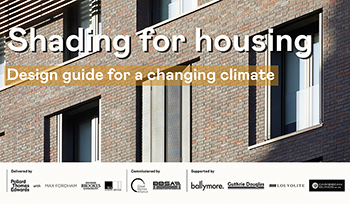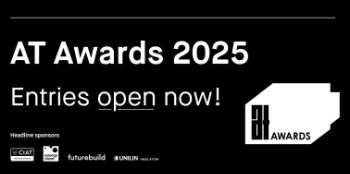Extended reality (XR) in a post-pandemic world

|
| Article first appeared in the AT Journal no 140, winter 2021 entitled 'Can Chartered Architectural Technologists leverage XR in a post-pandemic world?' written by Alex Judd MCIAT, Chartered Architectural Technologist, HNW Architect |
Contents |
[edit] Leveraging Extended Reality (XR)
Can Chartered Architectural Technologists leverage XR in a post-pandemic world?
Following the shift to a virtual work environment, brought on by the pandemic, we have been more reliant on technology than ever. The extended reality (XR) industry is growing, yet its use in architecture is still few and far between. In truth, XR is ready to be adopted by even the smallest of firms and is by no means a new technology – dating back to the 1960s. So, what is causing this low uptake and how can this technology be leveraged?
[edit] Common barriers
One of the main barriers to the adoption of this technology is the perception that it is essentially visualisation, requiring a high skill set for the production of hyper- realistic content. Although this can be true, nowadays XR is far more accessible and tackles more than just ‘Arch-Viz’ content. XR can be an excellent learning tool, providing safe, cost-effective means of training. This is achieved using a principle called gamification: combining gaming principles with non-gaming concepts help reinforce the users understanding and knowledge.
As an example, we have researched gamification principles by developing a virtual reality (VR) application that teaches the user how to juggle. By slowing down the movement of the balls in VR, the user finds it much easier to make the connection between the juggling pattern and the physical movement required to do so. After some time in a headset, the user was able to juggle for longer outside of the headset than they originally could when they started. When this principle is applied to elements of buildability or high-risk site activities, vast improvements can be made to safety procedures as well as understanding the construction principles involved.
Another obstacle for the adoption of this technology is the premise that it is an additional cost for the client. Above all, if you expect the client to pay for XR experiences, it will never be used. Instead, see it as an investment, long-term for your clients and short-term for your own company. It is worthwhile noting that R&D credits may offset the cost of this technology, that is the client does not necessarily need to step into a VR headset for your company to be using VR on a project. Model discrepancies such as proportions, aesthetics and clashes are far easier to spot in VR than on a monitor. Eventually, as confidence is built up in its use internally, a transition to client focused XR is much easier to ascertain.
[edit] Post COVID-19 pandemic
Despite these common and ongoing barriers, a recent challenge has arisen in a post-pandemic office environment. How can XR be leveraged in a workplace where staff may not be present? In the most general sense, there are three types of offices: working from home, full time at the office or a split between, each of which requires a unique XR strategy.
For an office that works primarily from home via remote services, the focus is on making XR as accessible as possible. Mobile XR such as augmented reality (AR) and three degrees of freedom (3DOF) VR can be an excellent launchpad. By utilising staff’s existing smartphones, very little additional hardware is required, and collaborative AR experiences can be set up with ease. In the instance where site visits may be challenging, panoramic/360 degree photos can capture site progress and be reviewed using even the most basic cardboard-style viewer. The same principles can be applied to showcase completed projects to potential clients that may also have a smartphone and are based in a home office.
What these AR experiences constitute is very much dependant on what the company wants to achieve. For instance, we have previously developed a location-based AR underground utility application to allow site teams to collaboratively interrogate complex urban infrastructure networks. Our research concluded that applications such as these were promising for data interrogation and providing an understanding of the site but may not be suitable to make high risk decisions from.
Conversely, when all staff are based in the office, more rigorous XR experiences can be established. Mobile- based XR is limited in that it lacks the depth and clarity that a six degrees of freedom (6DOF) VR experience can provide. Given there is a budget to do so, establishing VR workstations can allow staff to quickly jump into a VR experience with minimal set-up or experience required. Despite this, it is often the case that these workstations are under-utilised. Promoting the software with scavenger-hunt-style games using the workstation can help encourage its use while also allowing the user to familiarise themselves with the system. For more mature VR experiences created in software like game engines, this can also be a good way to showcase new mechanics and features that become added as your system develops.
Recently, we have developed a VR design-decision application using a previously mentioned game engine software, specifically Unreal Engine. Teachers could immerse themselves into a typical classroom and make informed decisions on aspects such as furniture, lighting, and classroom layouts. The resultant data could then be shared with designers to aid them in the design process. By involving the user at these early stages of design, the intent is far clearer, and designers can design more efficiently and more effectively.
For those that are split between the office and home, budget dependant, there is no reason why you cannot do both! It may be that if the office space is solely used for meetings, then the VR workstation is integrated with a meeting space. Or if you are spending more time on site than in the office, then AR visualisations and walkthroughs may be the way forward.
[edit] Conclusion
When reflecting on your XR strategy, it is important to consider the following items. Primarily, what are your drivers? Are they external client-led requests for VR experiences to be included in your work package, or internal technology advocates that can see a benefit in its use? If there are no clear drivers, but something you fundamentally believe you should be doing, it may be worth allocating an XR champion to steer the strategy, or otherwise a set of principles to build from.
Even if the drivers are primarily client led, focus on its use internally first. If your colleagues are struggling to use it, it is most likely that your clients will find it challenging too. This approach is a great way to get immediate feedback and measure your XR strategy as and when it progresses. As this internal confidence is built up, start looking into making investments into XR technology. Focus on 6DOF untethered VR and LiDAR enabled AR hardware, complemented with game engine software, or fully featured XR software development kits.
The key word here is measure. Although the technology is there, the industry is still warming up to it, and it is likely that teething problems will occur along the way. Even if your work stays the same, the technology will inevitably change and that could shift your strategy significantly. Constantly review your strategy and underline the key lessons learnt to stay ahead of the curve. On a final note, more so than anything, have fun with it! Gamification not only reinforces knowledge gained, but it also makes the experience enjoyable. Meetings become less dull, collaboration becomes natural, and the design process becomes enriched.
MAVRiC (mixed augmented and virtual reality inter- connected) is an independent not-for-profit group that focuses on addressing this disconnect between XR and the AEC industry. Consisting primarily of Architectural Technologists, our principles are cemented in supporting companies looking to adopt this technology with advice and guidance, utilising research and development initiatives.
--CIAT
[edit] Related articles on Designing Buildings
- 3D MOVE: Mobile Immersive Visualisation Environment.
- 5G, AI and construction in China.
- Artificial intelligence and civil engineering.
- Assisted reality aR.
- Augmented reality for real estate.
- Building information modelling BIM.
- Cobots.
- Computer aided design CAD.
- Computer-generated imagery (CGI).
- ConTech.
- Edge devices.
- Eyeware app.
- Gravity Sketch.
- Immersive Hybrid Reality IHR.
- Integrated modelling, simulation and visualisation (MSV) for sustainable built healing environments (BHEs).
- Integrated systems.
- Metaverse.
- Mixed reality.
- Projections.
- Real estate in the augmented age.
- Robots.
- Shaping the Future of Construction: Inspiring innovators redefine the industry.
- The rise of 5G in buildings.
- Trends towards wearables and wellbeing in buildings.
- TruVision.
- Virtual construction model.
- Virtual reality and manufacturing.
- Virtual reality in construction.
- Visualisation.
Featured articles and news
Editor's broadbrush view on forms of electrical heating in context.
The pace of heating change; BSRIA market intelligence
Electric Dreams, Boiler Realities.
New President of ECA announced
Ruth Devine MBE becomes the 112th President of the Electrical Contractors Association.
New CIAT Professional Standards Competency Framework
Supercedes the 2019 Professional Standards Framework from 1 May 2025.
Difficult Sites: Architecture Against the Odds
Free exhibition at the RIBA Architecture Gallery until 31 May.
PPN 021: Payment Spot Checks in Public Sub-Contracts
Published following consultation and influence from ECA.
Designing Buildings reaches 20,000 articles
We take a look back at some of the stranger contributions.
Lessons learned from other industries.
The Buildings of the Malting Industry. Book review.
Conserving places with climate resilience in mind.
Combating burnout.
The 5 elements of seiri, seiton, seiso, seiketsu and shitsuke.
Shading for housing, a design guide
A look back at embedding a new culture of shading.
The Architectural Technology Awards
The AT Awards 2025 are open for entries!
ECA Blueprint for Electrification
The 'mosaic of interconnected challenges' and how to deliver the UK’s Transition to Clean Power.
Grenfell Tower Principal Contractor Award notice
Tower repair and maintenance contractor announced as demolition contractor.
























